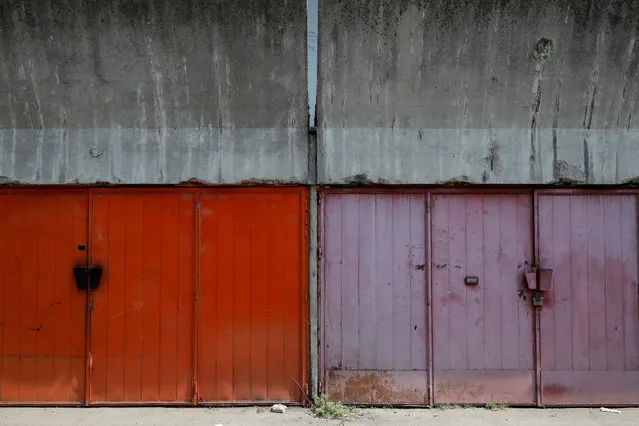
Garage doors are seen outside Block 23 in an apartment neighbourhood in New Belgrade, Serbia, July 31, 2019. After World War Two socialist Yugoslavia led by Josip Broz Tito set out to reconstruct a land destroyed by fighting. Residential blocks, hotels, civic centres and monuments all made of concrete shot up across the country. (Photo by Marko Djurica/Reuters)
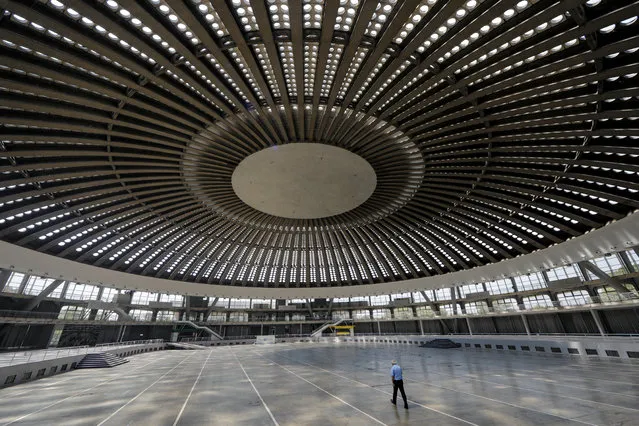
A security worker walks inside Hall 1 of the Belgrade Fair in Belgrade, Serbia, July 25, 2019. (Photo by Marko Djurica/Reuters)

A staircase stands within The Great Hall inside The Palata Srbija building in Belgrade, Serbia, July 1, 2019. The Palata Srbija building hosted former world leaders. Each of the former Yugoslav republics had its own salon with a central room called the hall of Yugoslavia. “It is a shame to keep such a master piece away from the eyes of the public”, said Sandra Tesla, curator of the building. (Photo by Marko Djurica/Reuters)
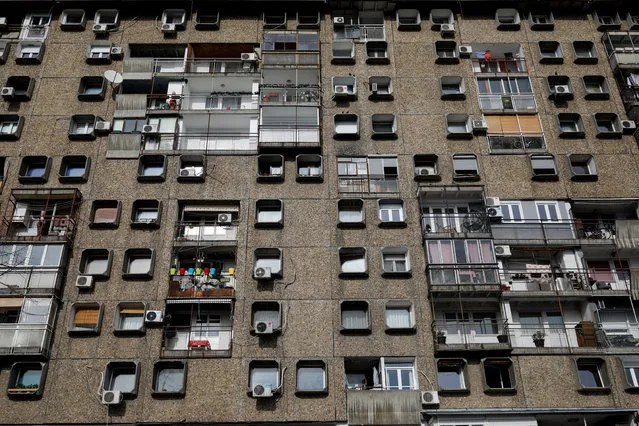
Windows face out of the building, known as the “TV building”, on Block 28 neighbourhood in New Belgrade, Serbia, March 5, 2019. Brutalism, an architectural style popular in the 1950s and 1960s, based on crude, block-like forms cast from concrete was popular throughout the eastern bloc. (Photo by Marko Djurica/Reuters)
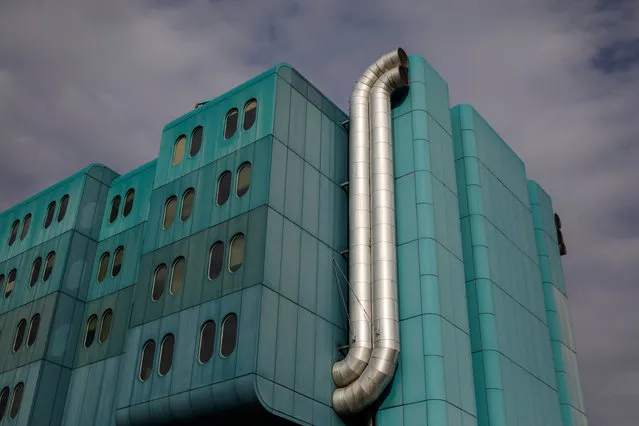
Clinical Hospital Dubrava stands in Zagreb, Croatia, February 25, 2019. (Photo by Marko Djurica/Reuters)
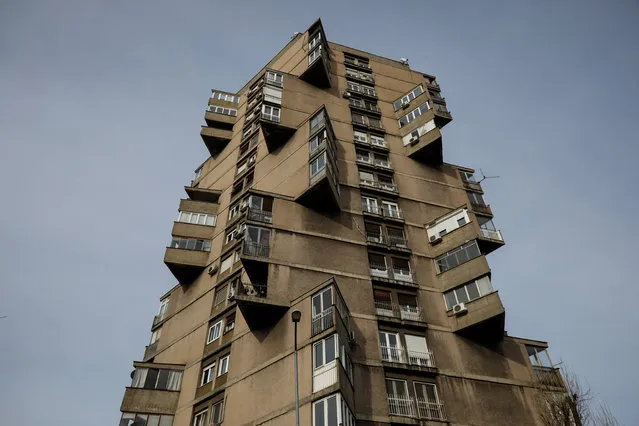
Karaburma Housing Tower, also known as the “Toblerone” building, stands in the Karaburma district in Belgrade, Serbia, March 5, 2019. (Photo by Marko Djurica/Reuters)
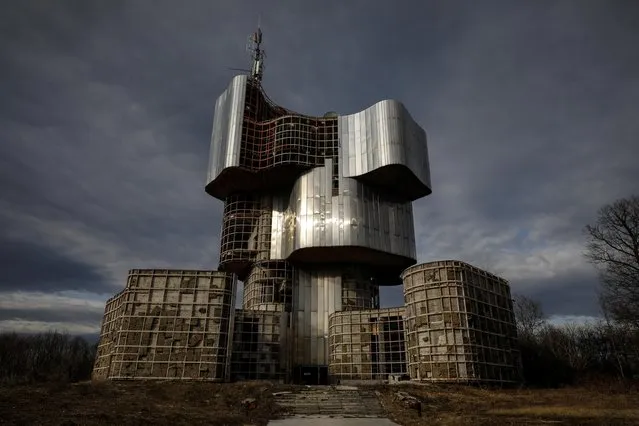
The Monument to the Uprising of the People of Kordun and Banija stands in Petrova Gora, Croatia, February 26, 2019. Examples of Yugoslav brutalism include the huge memorials commemorating the struggle against fascism, often placed in dramatic rural settings. Many of those pieces of art remain in disrepair, such as The Monument to the Uprising of the People of Kordun and Banija. (Photo by Marko Djurica/Reuters)

The Eastern City Gate apartment buildings complex stands in the Konjarnik neighbourhood in Belgrade, Serbia, July 30, 2019. Brutalism, an architectural style popular in the 1950s and 1960s, based on crude, block-like forms cast from concrete was popular throughout the eastern bloc. (Photo by Marko Djurica/Reuters)
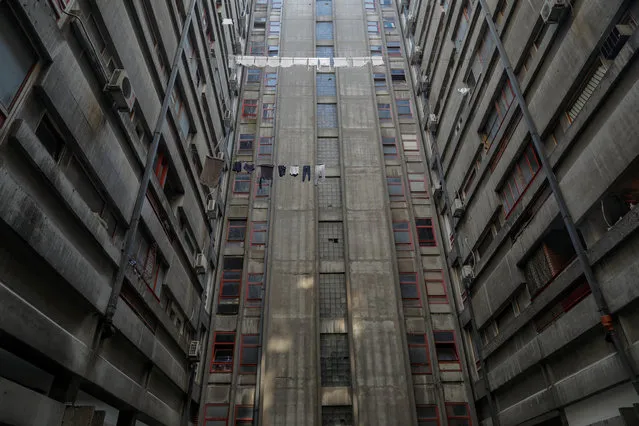
Laundry hangs out to dry outside of Block 23 in an apartment neighbourhood in New Belgrade, Serbia, July 31, 2019. Brutalism, an architectural style popular in the 1950s and 1960s, based on crude, block-like forms cast from concrete was popular throughout the eastern bloc. After World War Two socialist Yugoslavia led by Josip Broz Tito set out to reconstruct a land destroyed by fighting. Residential blocks, hotels, civic centres and monuments all made of concrete shot up across the country. The architecture was supposed to show the power of a state between two worlds – Western democracy and the communist East, looking to forge its own path and create a socialist utopia. (Photo by Marko Djurica/Reuters)
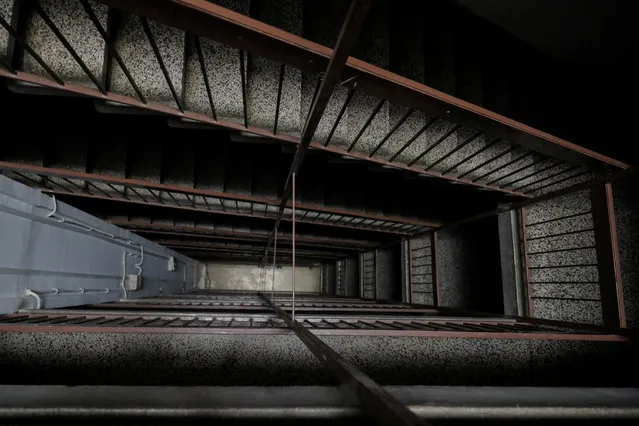
A staircase is seen inside the Block 11, apartment neighbourhood in Belgrade, Serbia, July 31, 2019. A staircase leads through Block 11 in an apartment neighbourhood in New Belgrade, Serbia, July 31, 2019. After World War Two socialist Yugoslavia led by Josip Broz Tito set out to reconstruct a land destroyed by fighting. Residential blocks, hotels, civic centres and monuments all made of concrete shot up across the country. The architecture was supposed to show the power of a state between two worlds – Western democracy and the communist East, looking to forge its own path and create a socialist utopia. (Photo by Marko Djurica/Reuters)

Genex Tower, also known as The Western City gate, stands in Belgrade, Serbia, March 1, 2019. The building consists of two soaring pillars, connected by an aerial bridge. The tower is one of the most significant examples of brutalism, an architectural style popular in the 1950s and 1960s, based on crude, block-like forms cast from concrete. “Genex tower is among the most interesting sight. People see it on their way from the airport and it immediately draws their attention”, said Vojin Muncin, manager of the Yugotour sightseeing agency which guides tourists around the Serbian capital. (Photo by Marko Djurica/Reuters)
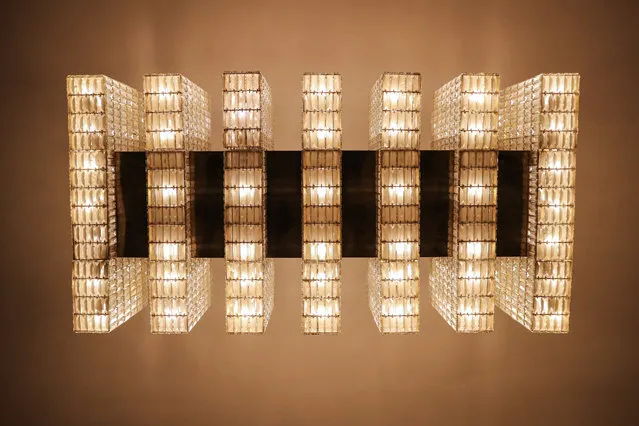
A chandelier hangs from the top of the Croatia saloon inside The Palata Srbija building in Belgrade, Serbia, July 1, 2019. The Palata Srbija building hosted former world leaders. Each of the former Yugoslav republics had its own salon with a central room called the hall of Yugoslavia. “It is a shame to keep such a master piece away from the eyes of the public”, said Sandra Tesla, curator of the building. (Photo by Marko Djurica/Reuters)
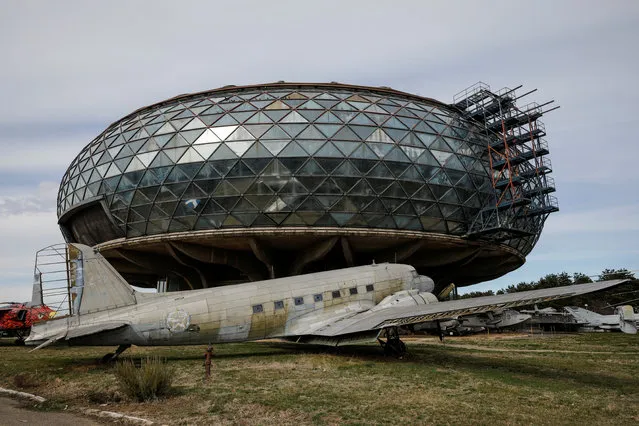
A formally used Yugoslav passenger aircraft sits in front of the Aeronautical Museum in Belgrade, Serbia, March 5, 2019. After World War Two socialist Yugoslavia led by Josip Broz Tito set out to reconstruct a land destroyed by fighting. Residential blocks, hotels, civic centres and monuments all made of concrete shot up across the country. (Photo by Marko Djurica/Reuters)
01 Nov 2019 00:05:00,
post received
0 comments
